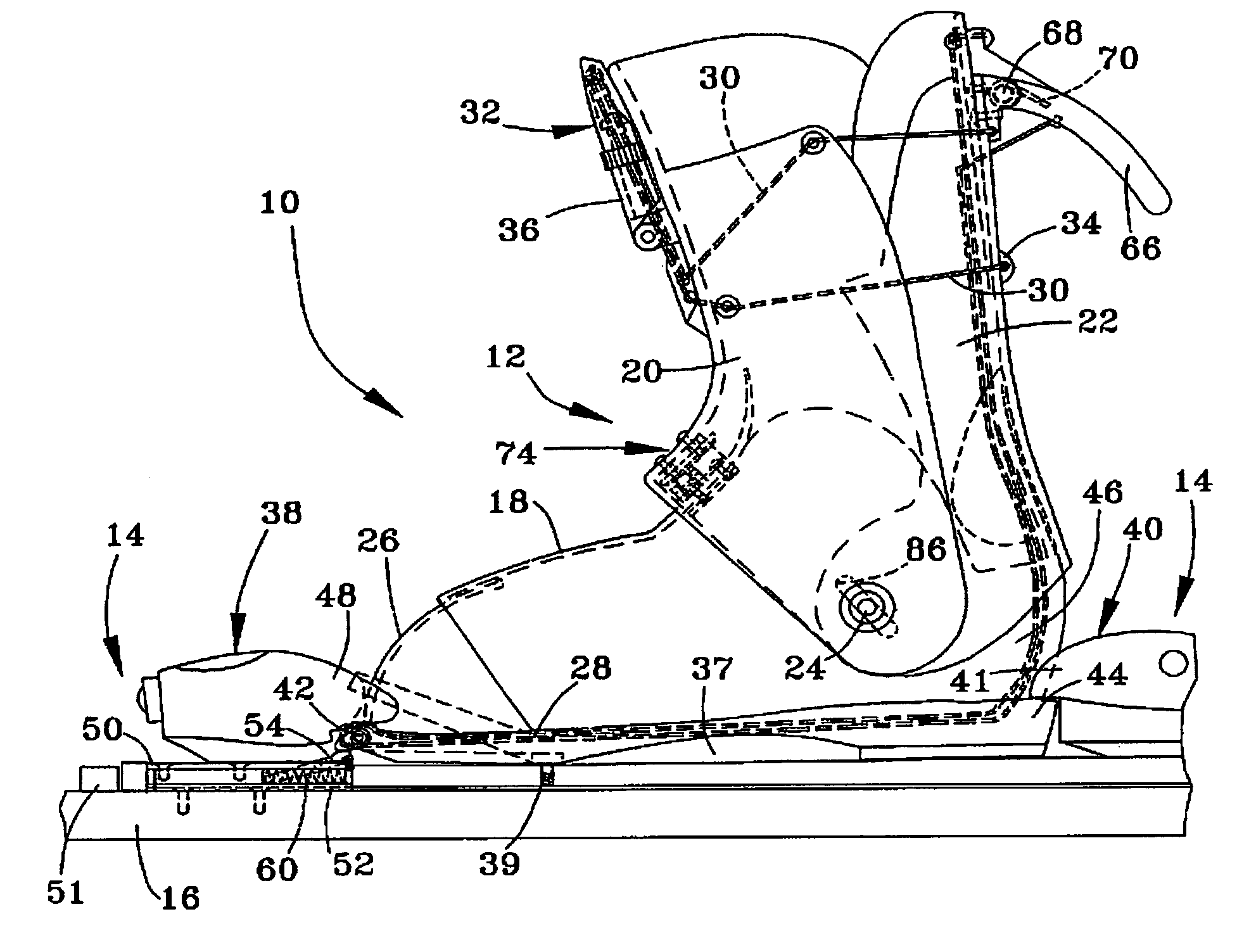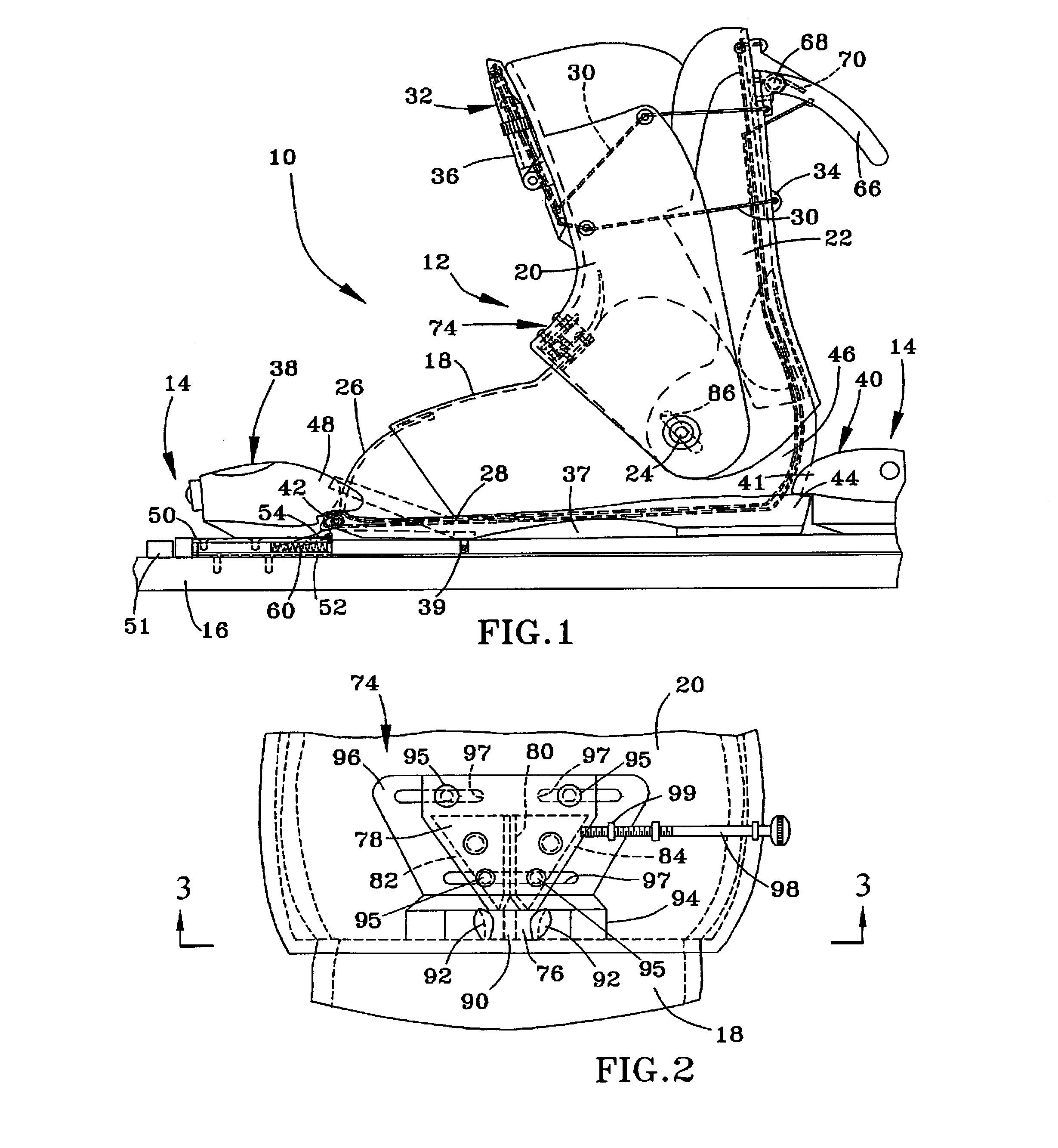Ski boot and ski boot binding
a technology of ski boot and ski boot, which is applied in the field of ski equipment, can solve the problems of phantom foot injury, increased knee load of ski boot, and downward force of ski tail, so as to increase the inside turn ski edge angle, increase the top of the ski, and increase the edge holding force
- Summary
- Abstract
- Description
- Claims
- Application Information
AI Technical Summary
Benefits of technology
Problems solved by technology
Method used
Image
Examples
Embodiment Construction
[0017]A ski boot and binding assembly 10 in accordance with a first embodiment of the invention is Illustrated in FIGS. 1 through 4, with alternative embodiments of the invention being illustrated in FIGS. 5 and 6. As will become apparent from the following discussion, the embodiments are depicted as combining two features of this invention—a toe release system and a steering system—though each of these features could be utilized separately from the other.
[0018]With reference to FIGS. 1 through 4, the ski boot and binding assembly 10 comprises a ski boot 12 mounted to a binding assembly 14, the latter of which is secured to a ski 16. The boot 12 is represented as being of the clam shell-type, and as such has a foot shell 18 and front and rear cuffs 20 and 22. The cuffs 20 and 22 are pivotably attached to each other and to the foot shell 18 at two pivot points defined by hinges 24 located on opposite sides of the boot 12. The rearward edge of the front cuff 20 overlies the rear cuff ...
PUM
 Login to View More
Login to View More Abstract
Description
Claims
Application Information
 Login to View More
Login to View More - R&D
- Intellectual Property
- Life Sciences
- Materials
- Tech Scout
- Unparalleled Data Quality
- Higher Quality Content
- 60% Fewer Hallucinations
Browse by: Latest US Patents, China's latest patents, Technical Efficacy Thesaurus, Application Domain, Technology Topic, Popular Technical Reports.
© 2025 PatSnap. All rights reserved.Legal|Privacy policy|Modern Slavery Act Transparency Statement|Sitemap|About US| Contact US: help@patsnap.com



